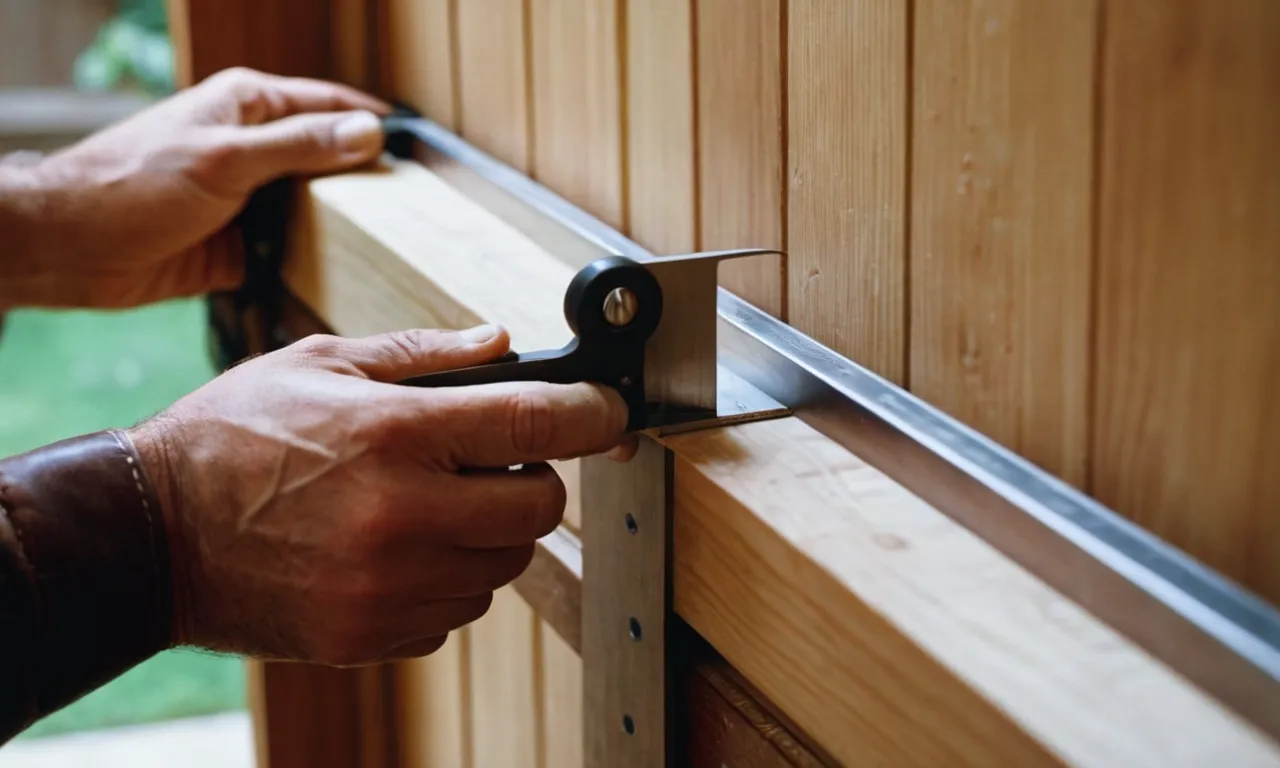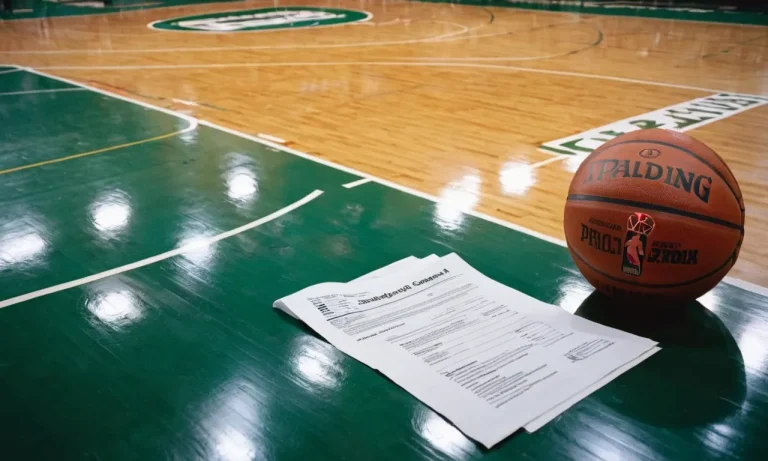How To Plane A Door – A Step-By-Step Guide
Doors that stick or don’t close properly can be incredibly annoying. If your door is warped, has uneven gaps, drags on the floor, or just doesn’t function smoothly, it likely needs to be planed.
Here’s a quick answer if you’re short on time: to plane a door, you’ll need a block plane or electric hand planer, pencil, straightedge, safety gear, and sandpaper. Mark problem areas on the door with a pencil. Plane down high spots, working across the wood grain in thin passes.
Use a straightedge to check for flatness. Sand smooth. Apply protective finish.
In this comprehensive guide, we’ll cover everything you need to know to successfully plane a warped wooden door. You’ll learn how to identify problem areas, use a block plane or power planer safely and effectively, achieve a flat surface, and protect the wood once planing is complete.
Assess the Door and Mark Problem Areas
Before you start planing a door, it’s important to assess the door and mark problem areas. This will help you identify the specific areas that need to be addressed and ensure a smooth planing process. Here are a few steps to follow:
Inspect for Sticking Points and Gaps
The first step is to carefully inspect the door for any sticking points or gaps. Sticking points occur when the door rubs or gets stuck against the frame, making it difficult to open or close. Gaps, on the other hand, occur when there is a noticeable space between the door and the frame.
By identifying these problem areas, you can focus your planing efforts on the right spots.
Use a Straightedge to Find Uneven Spots
Next, grab a straightedge, such as a ruler or a level, and run it along the surface of the door. Pay close attention to any areas where the straightedge doesn’t lie flat, as this indicates uneven spots. These uneven spots can cause the door to be misaligned or not properly fit into the frame.
By identifying these areas, you can target them during the planing process.
Mark High Spots with Pencil
Once you’ve identified the sticking points and uneven spots, use a pencil to mark the high spots on the door. This will serve as a guide during the planing process and help you remove the excess material in those specific areas.
Make sure to mark the spots clearly so that you can easily refer back to them when you start planing the door.
By carefully assessing the door and marking the problem areas, you’ll be able to tackle the planing process more effectively and achieve the desired results. Remember, precision is key when it comes to planing a door, so take your time and ensure you’re addressing the right spots.
Gather the Proper Tools
Before you start planing a door, it’s important to gather all the necessary tools. Having the right tools on hand will make the process much easier and ensure a successful outcome. Here are the tools you’ll need:
Block Plane
A block plane is an essential tool for planing a door. It’s a small, handheld plane that is perfect for trimming and smoothing wood. The blade is adjustable, allowing you to remove small amounts of material at a time.
This tool is great for removing high spots and making precise adjustments to the door’s size and shape.
Power Hand Planer
If you have a large amount of material to remove or if the door is severely warped, a power hand planer may be necessary. This tool uses an electric motor to quickly and efficiently remove material from the door’s surface.
It’s important to use caution when using a power hand planer, as it can remove material rapidly.
Straightedge
A straightedge is a long, flat tool that is used to check the straightness of the door. It’s important to have a straightedge on hand to ensure that your planing is even and consistent. A straightedge can also be used to mark any high or low spots on the door’s surface, giving you a clear guide for where to plane.
Pencil
A pencil is a simple but essential tool for marking your measurements and any areas that need to be planed. It’s important to mark your cuts and adjustments before you start planing to ensure accuracy and symmetry.
A pencil with a sharp point will make it easier to mark the door’s surface without leaving behind any unwanted lines.
Safety Gear
Safety should always be a top priority when working with tools. Make sure to wear safety goggles to protect your eyes from any flying wood chips or debris. Additionally, it’s a good idea to wear ear protection to minimize noise exposure from power tools.
Lastly, wearing gloves can provide added grip and protect your hands during the planing process.
Now that you have all the necessary tools, you’re ready to start planing your door. Remember to always work carefully and methodically, making small adjustments at a time to achieve the desired result.
Plane Down High Spots
When it comes to planing down high spots on a door, it is important to work methodically and carefully. Start by identifying the areas that need to be planed down. These high spots can occur due to various reasons such as warping or swelling of the door.
Once you have identified the high spots, you can begin the planing process.
Work Diagonally in Thin Passes
One effective technique for planing down high spots is to work diagonally in thin passes. This means that instead of planing in one direction, you should alternate the angle of your plane to create a diagonal pattern.
By doing so, you can gradually remove material from the high spots without causing any damage to the door. This technique helps to distribute the pressure evenly and prevents the wood from splintering.
Go Slow to Avoid Tear-Out
When planing down high spots, it is crucial to go slow and steady. Applying too much pressure or planing too quickly can lead to tear-out, which is when the wood fibers start to pull away from the surface, resulting in a rough and uneven finish.
To avoid tear-out, use light and even pressure while planing and make sure to keep the plane sharp. Taking your time and being patient will ensure a smooth and even surface.
Frequently Check Flatness
Throughout the planing process, it is essential to frequently check the flatness of the door. This can be done by using a straightedge or a level. Place the straightedge or level on different areas of the door to see if there are any high or low spots.
If you notice any inconsistencies, continue planing until the surface is flat and even. Regularly checking the flatness will help you achieve the desired result and ensure that the door functions properly.
For more detailed guidance on planing a door, you can visit websites such as Family Handyman or This Old House. These websites offer step-by-step instructions, tips, and tricks to help you successfully plane a door and achieve professional results.
Smooth and Protect the Surface
Sand Until Smooth
One of the crucial steps in planning a door is to ensure that the surface is smooth and free from any imperfections. To achieve this, start by sanding the door using sandpaper. Begin with a coarse grit sandpaper to remove any rough spots or uneven surfaces.
Gradually progress to finer grit sandpaper until the surface feels smooth to the touch. Sanding not only helps to create a visually appealing finish but also prepares the surface for the application of protective finishes.
Apply Protective Finish
Once the surface of the door is smooth, the next step is to apply a protective finish to enhance its durability and appearance. There are several types of finishes that can be used, such as varnish, polyurethane, or paint.
These finishes not only protect the door from moisture, scratches, and UV damage but also add a beautiful sheen to the surface. Before applying the protective finish, make sure to clean the door thoroughly and remove any dust or debris.
Apply the finish evenly using a brush or a roller, following the manufacturer’s instructions. Multiple coats may be necessary for optimal protection and finish.
It is important to note that the choice of protective finish depends on the type of door material and the desired look. For wooden doors, varnish or polyurethane finishes are commonly used, while paint can be applied to both wooden and metal doors.
It is recommended to research and consult with experts or professionals to determine the most suitable finish for your specific door.
For more detailed information on door finishes and their application, you can visit Wood Magazine’s guide on finishing wood doors. This resource provides valuable insights and tips to help you achieve a professional and long-lasting finish for your door.
Conclusion
Planing a warped, stuck, or unbalanced door is a satisfying DIY project that can restore proper function. With some basic tools, patience, and the techniques outlined here, you can plane a door flat and smooth. Just work methodically to remove a little material at a time.
Take your time, double check for flatness, and finish up by sanding and sealing the surface. Your freshly planed door will open and close with ease once again.







